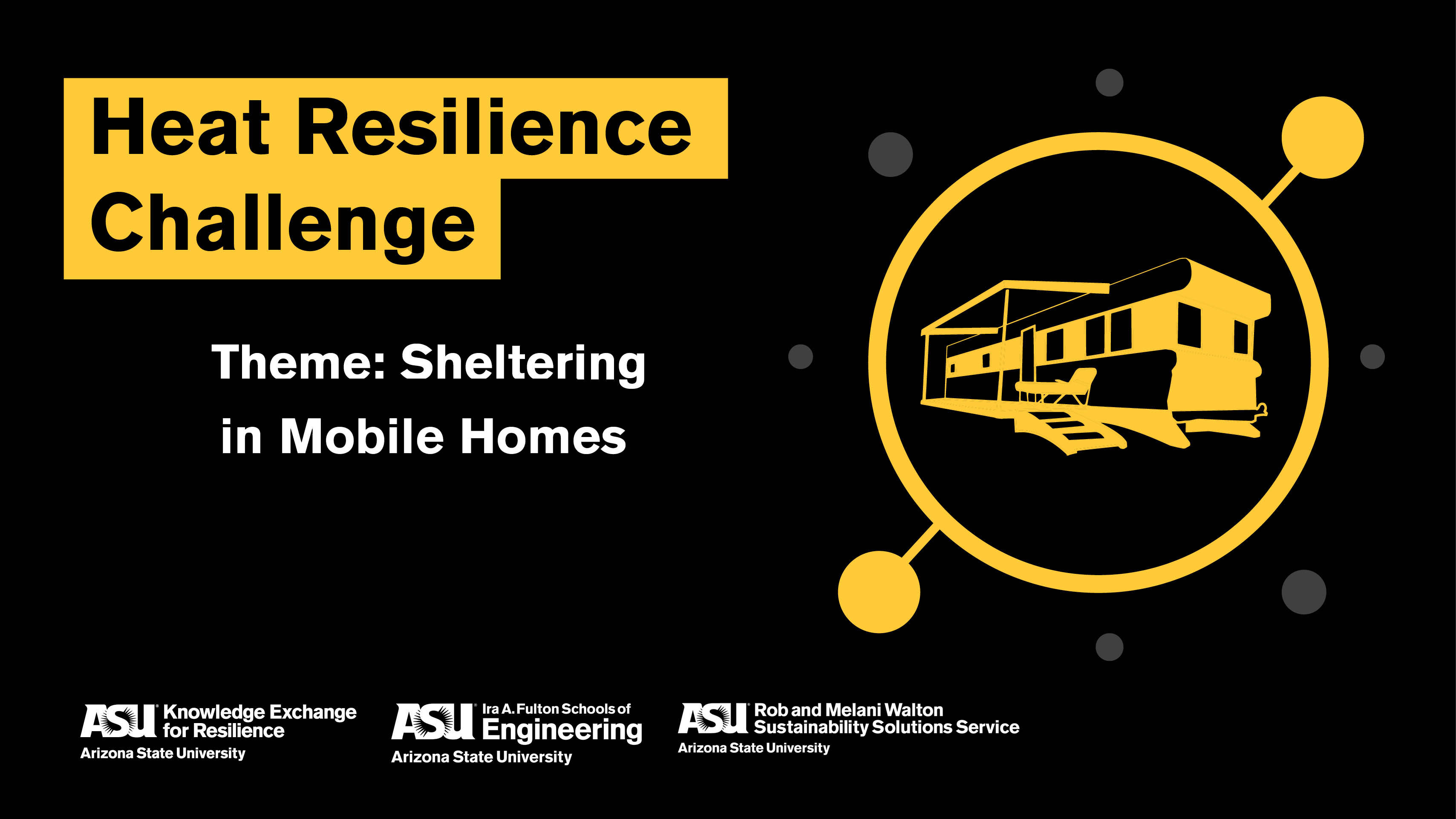The Heat Resilience Challenge
To develop integrated solutions to reduce health impacts and the cost of cooling for mobile home residents vulnerable to extreme heat in Maricopa County. The challenge follows a three-step process using the framework "share, discover, solve" and features the Shelter theme of the FUSE framework for community resilience created by the Knowledge Exchange for Resilience.
The challenge officially began on May 11, 2020.
Share
Share existing knowledge across key stakeholders to generate a clear understanding of community needs and areas of opportunity. KER facilitated information sharing among university and community groups.
In May 2020, KER held a virtual workshop and Q&A to facilitate information-sharing among university and community groups. Researchers presented their findings, and participants discussed the opportunities of a multi-sector approach.
Discover
Discover how technologies, prototypes, mechanisms, designs, and capabilities can be developed, applied, or adapted to mobile homes and trailer parks. This process featured:
Interdisciplinary Student Teams managed by Rob and Melani Walton Sustainability Solutions (May – September 2020)
- Student interns focused on designing, developing, and testing solutions to integrate ideas into larger systems that resolve trade-offs in heat resilience.
Student projects hosted by the Engineering Projects in Community Service program, known as EPICS. The program is part of the Ira A. Fulton Schools of Engineering. ( August – December 2020)
-
The award-winning social entrepreneurship program developed teams to design, build, and deploy systems to solve engineering-based challenges.
Solve
Respond to heat resilience needs by testing the discoveries found in the previous stages.
KER is currently collaborating with partners to establish a demonstration site and test prototypes (August 2020 – present)
-
Organizing researchers and stakeholders together will determine the most feasible solutions.
-
A multi-sector coordinated effort will generate buy-in and community input.
-
Feedback from mobile home communities ensures solutions resonate with needs.
-
The cost-benefit analysis informs potential for realistic investment that addresses the underlying problems while offering resilience dividends.
